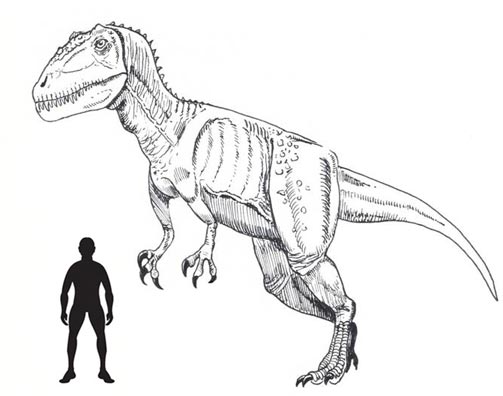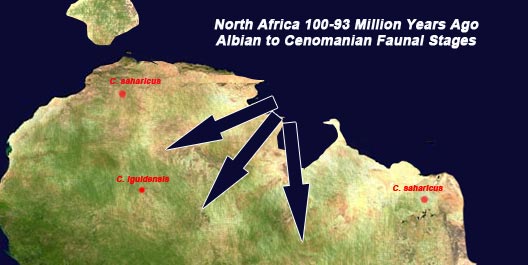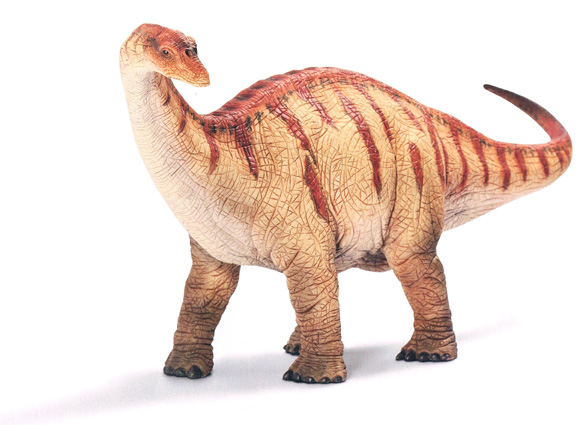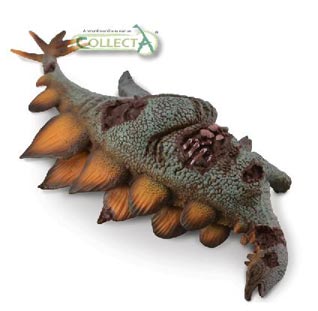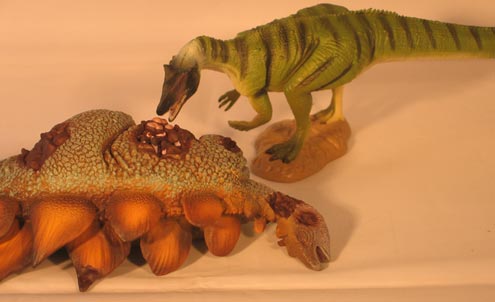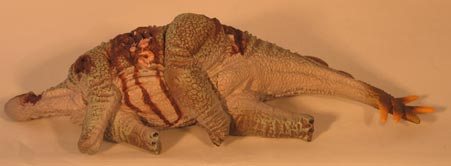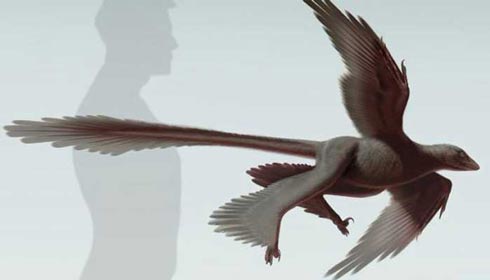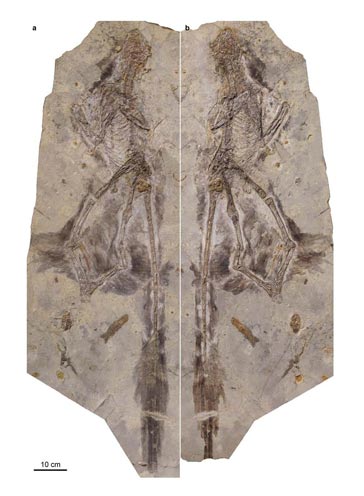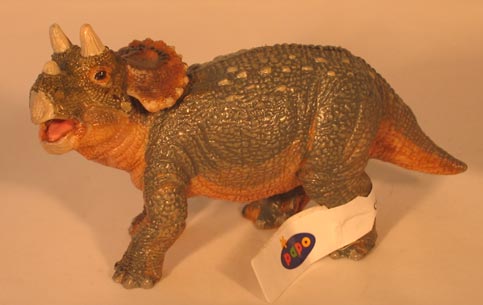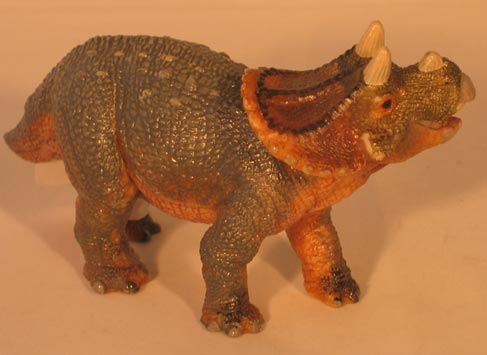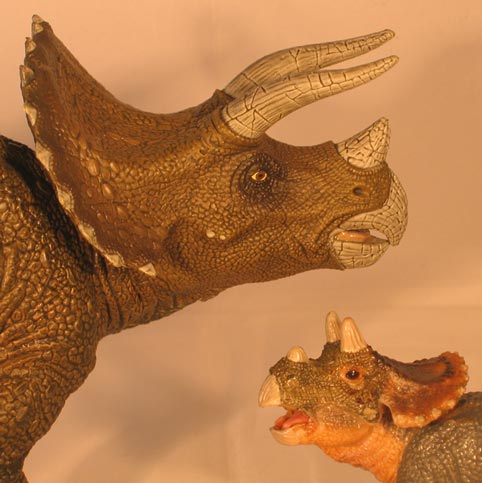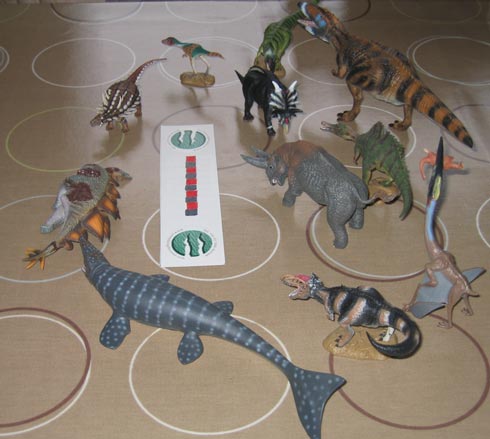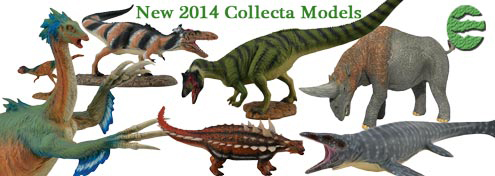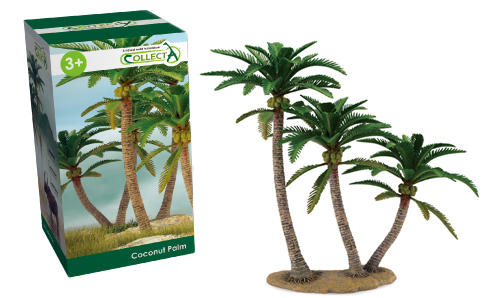Brain Provides Clue to the Descendants of the Cambrian Anomalocaridid Lyrarapax unguispinus
An international team of scientists, including researchers from the University of Arizona have identified and mapped the brain in an anomalocaridid that swam in the ancient seas that existed in the Cambrian geological period. Their study of the brain of this twelve centimetre long predator provides clues as to the taxonomic relationship that this extinct group has to extant members of the Animalia Kingdom.
The Brain of an Anomalocaridid
In addition, the remarkably well preserved fossil that is around 520 million years old, suggests that the brains of the anomalocaridids were relatively simple, the brains of their prey were, in many cases more complex. This leads to the intriguing thought that the evolution of apex predators could have given a boost to the evolution of better senses and ultimately bigger and more sophisticated brains.
The scientific paper, published in the journal “Nature” describes for the first time, the brain of an anomalocaridid, a group of extinct, early members of the Arthropoda that evolved into the first group of animal super-predators known in the fossil record. The largest specimens of Anomalocaris measure around a metre in length and it is now known that this group of nektonic predators survived into the Ordovician.
Anomalocaris
An Illustration of a Typical Anomalocaridid
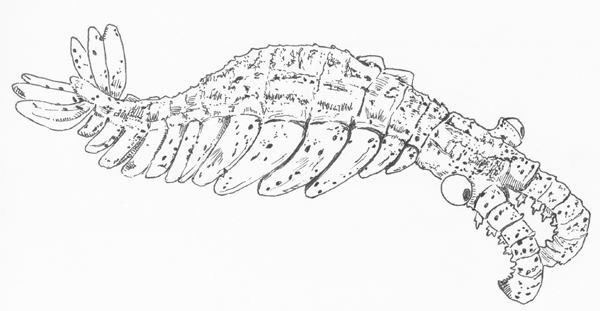
Anomalocaris drawing. Picture credit: Everything Dinosaur.
Picture credit: Everything Dinosaur
To view models and replicas of prehistoric invertebrates including Anomalocaris (whilst stocks last): CollectA Prehistoric Life Models.
Super Predator
An extensive analysis of the beautifully preserved fossils of a new to science, species of anomalocaridid predator discovered in Yunnan Province (China), suggests that these creatures have an affinity with the bizarre velvet worms (Onychophorans). These strange little creatures are found in the southern hemisphere and they are classed in the taxon Panarthropoda. Unlike true arthropods these creatures do not have an exoskeleton and they live in the undergrowth and leaf litter feeding on smaller animals such as insects and mites.
An Illustration of a Velvet Worm (Peripatus)
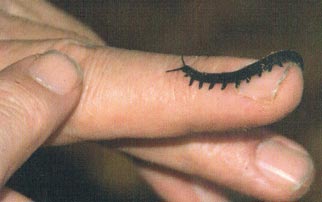
Peripatus – creatures like this may have been the first to walk on land.
Picture credit: BBC
The fossil material comes from the famous Chengjiang Formation (Yunnan Province), which rivals the Burgess Shale of British Columbia in terms of the variety of Cambrian fauna that is preserved. First explored by Chinese palaeontologists in 1984, the members that make up this part of the Chengjiang Formation have preserved in exquisite detail ancient marine creatures. The degree of fossil preservation is so good that even internal structures such as nervous systems can be studied.
One of the Fossils of the Newly Described L. unguispinus Showing Brain Morphology
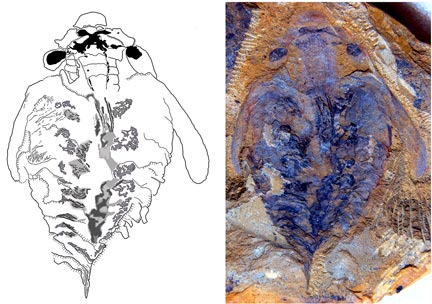
This photograph and corresponding drawing show the flattened, fossilised trace of the brain of the world’s earliest known predator; the X-like structure in the head denotes the fossilised brain.
Picture credit: University of Arizona
The Fossilised Brain
The “X-shaped” structure seen clearly in the line drawing interpretation of the fossil denotes the fossilised brain. Two dark round spots represent the optic ganglia with nerves that lead from the eye-stalks into the head. The smaller, almond-shaped areas just in front would have supported the creature’s grasping appendage. The main brain region is in front of the mouth, giving rise to two nerve cords leading down along the animal.
Commenting on the research, lead author of the scientific paper, Professor Nicholas Strausfeld (Director of Arizona University’s Centre for Insect Research) stated:
“It turns out the top predator of the Cambrian had a brain that was much less complex than that of some of its possible prey and that it looked surprisingly similar to a modern group of rather modest worm-like animals.”
Lyrarapax unguispinus
The new species has been named Lyrarapax unguispinus, this translates from the Latin to mean “spiny clawed lyre shaped predator”. It is likely that this creature was an active predator hunting other invertebrates and perhaps preying on the recently evolved primitive, jawless vertebrates, the fore-runners of the first fish.
Lyrarapax Attacks a Shoal of Primitive Fish
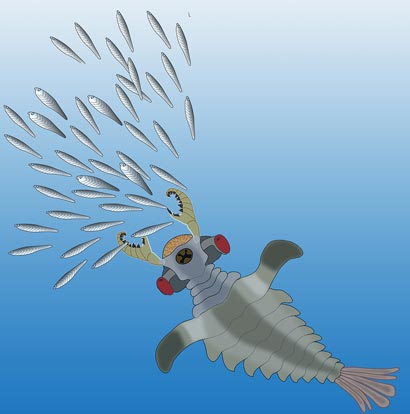
Artist’s impression of Lyrarapax, one of the species of the world’s first predators, the anomalocaridids, chasing its possible prey, primitive fishes that also existed in the Cambrian.
Picture credit: Professor Nicholas Strausfeld/University of Arizona
Professor Strausfeld and his colleagues have made some remarkable discoveries amongst the Chengjiang biota, back in the autumn of 2013, Everything Dinosaur reported on the mapping of the brain and nervous system of a Cambrian arthropod, fossils of which had been recovered from the same location as the Lyrarapax fossil material.
To read more about this remarkable discovery: Mapping the Ancient Brains and Nervous Systems of Cambrian Arthropods.
By examining in minute detail the brain morphology of this long extinct species, the scientists were able to compare the neuroanatomy with extant velvet worms (Onychophorans). The terrestrial velvet worm, such as Peripatus, has a simple brain located at the front of the mouth and a pair of ganglia, a group of nerve cells, located in the front part of the optic nerve and at the base of long, sensory feelers.
Similar Neuroanatomy to Extant Velvet Worms
The anomalocaridid fossil resembles the neuroanatomy of today’s Onychophorans (velvet worms) in several ways, according to Strausfeld and his collaborators. Onychophorans have a simple brain located in front of the mouth and a pair of ganglia – a collection of nerve cells – located in the front of the optic nerve and at the base of their long feelers. Anomalocaridids do not have these feelers, but they do have a pair of grasping claws extending out from the front of their heads.
Professor Strausfeld explained:
“Surprise, surprise, that is what we also found in our fossil. These top predators in the Cambrian are defined by just their single pair of appendages, these wicked-looking graspers, extending out from the front of their head. These are totally different from the antennae of insects and crustaceans. Such frontally disposed appendages are not found in any other living animals with the exception of the velvet worms.”
Study Suggests Velvet Worms are Descended from Anomalocaridids
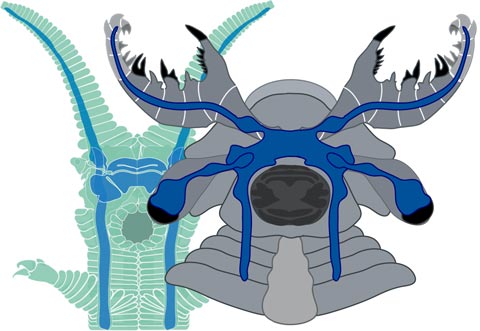
A side-by-side comparison reveals the similarity between the brain of a living Onychophoran (green) and that of the anomalocaridid fossil Lyrarapax unguispinus (grey).
Picture credit: Professor Nicholas Strausfeld
The relatively simple brain structure of these large, apex predators may have driven the evolution of more sophisticated senses and brains in their intended prey.
Professor Strausfeld concluded:
“With the evolution of dedicated and highly efficient predators, the pressure was on other animals to be able to detect and recognize potential danger and rapidly coordinate escape movements. These requirements may have driven the evolution of more complex brain circuitry.”
A Close up of the Head of Lyrarapax Showing a Powerful Grasping Claw
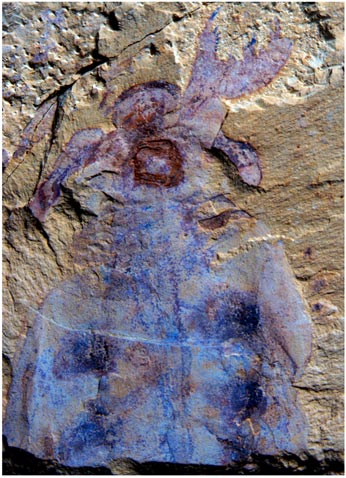
The grasping claw on this specimen can clearly be seen.
Picture credit: Peiyun Cong
Everything Dinosaur acknowledges the help of a University of Arizona press release in the compilation of this article.


